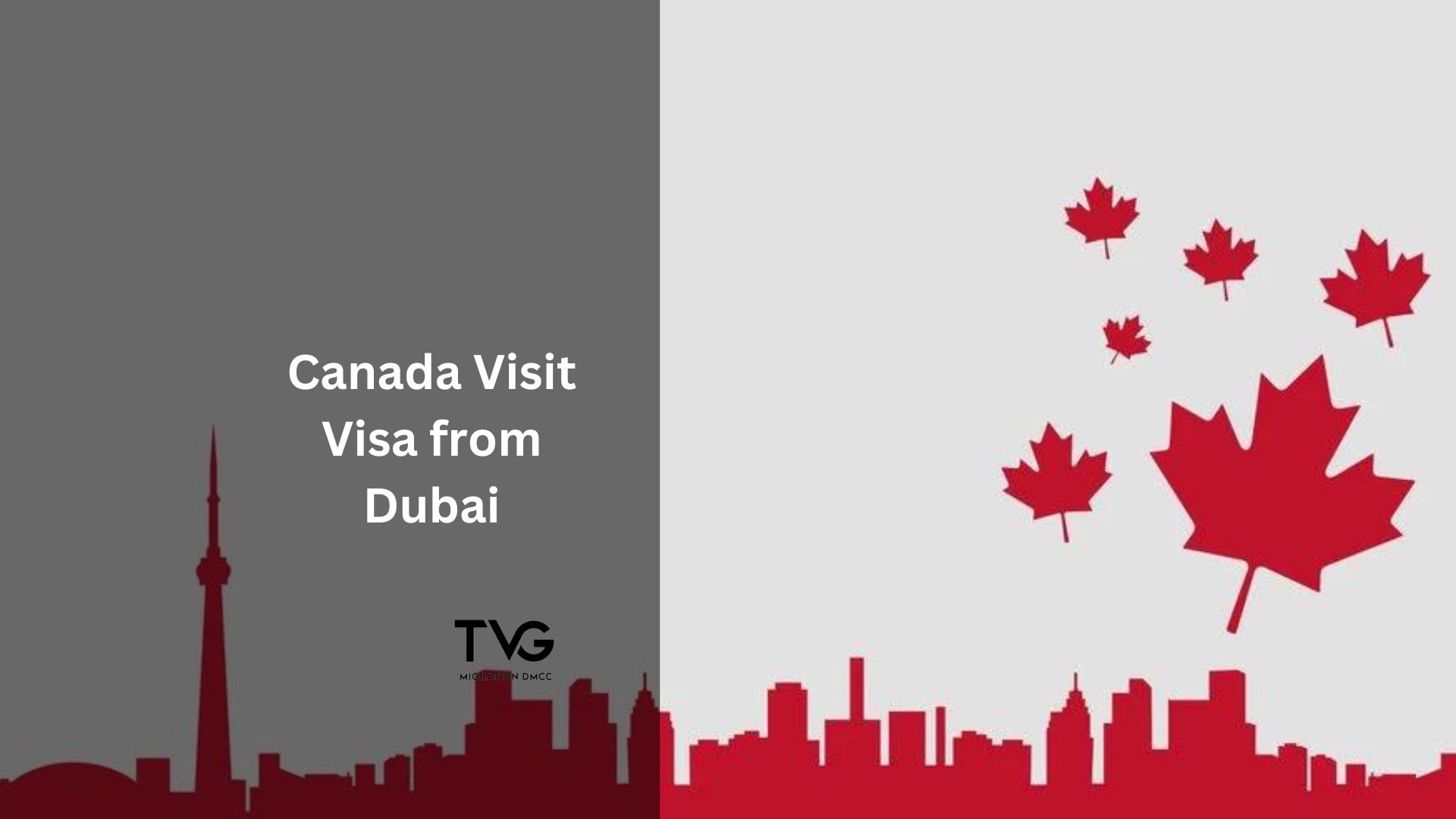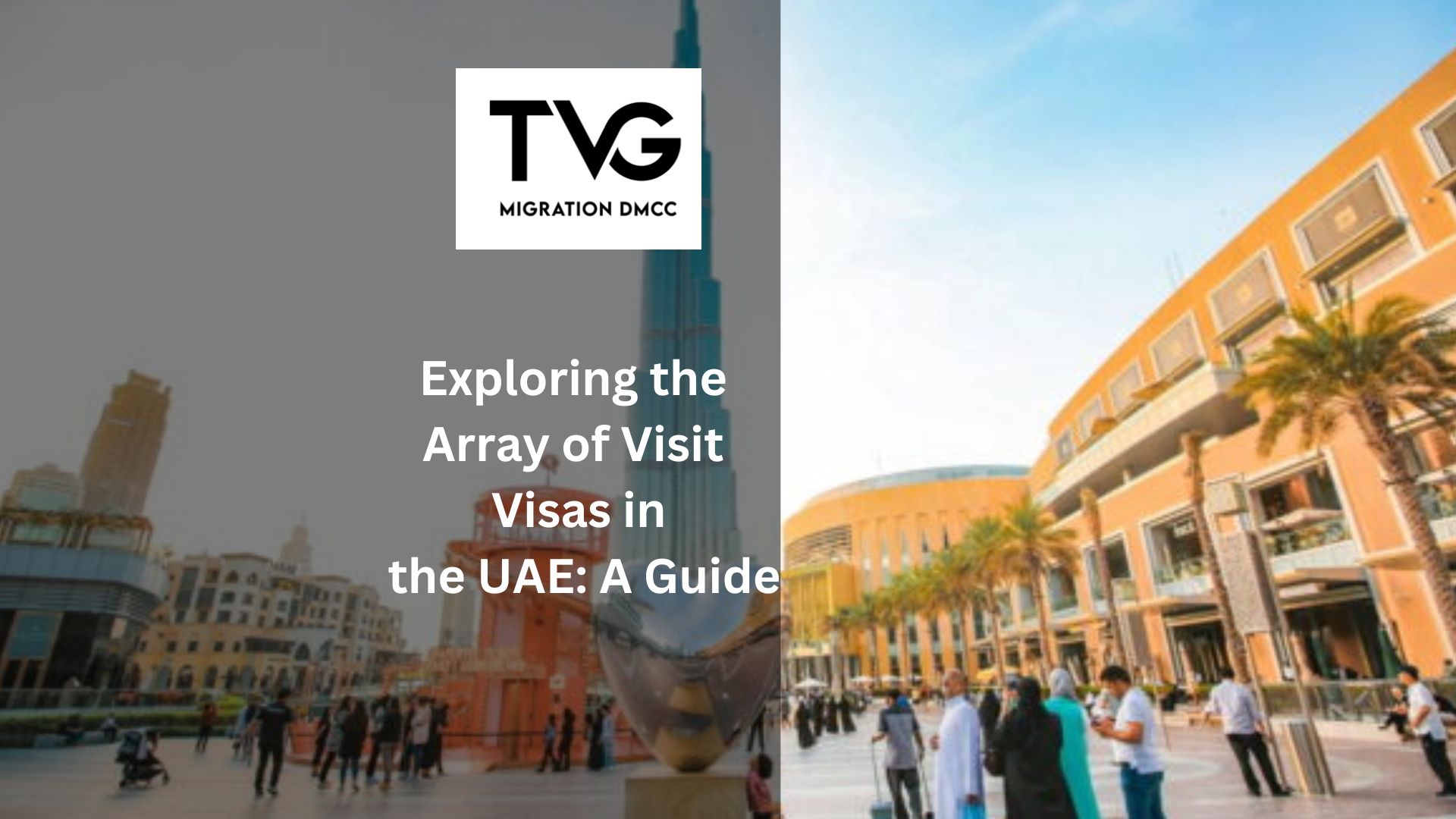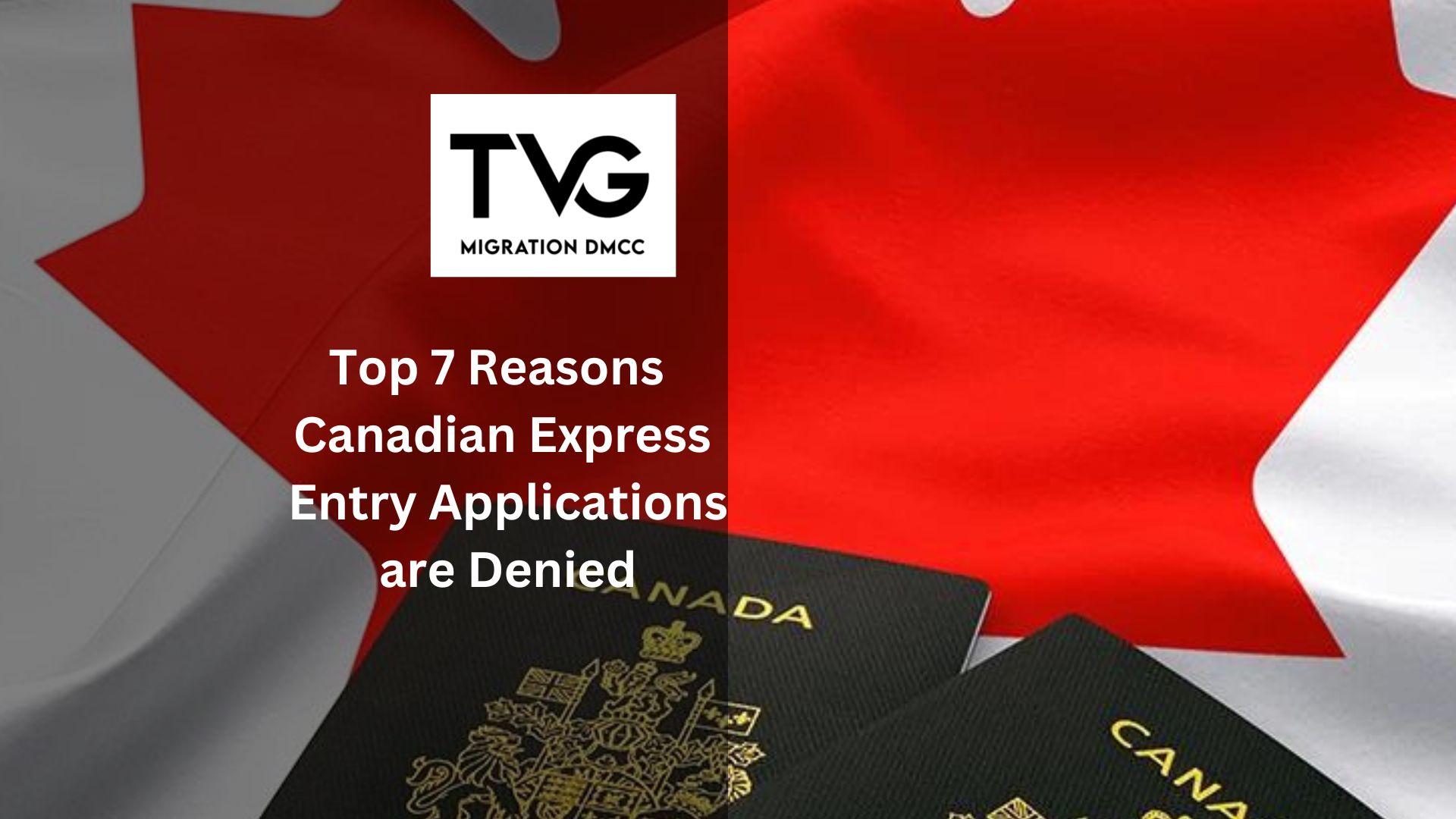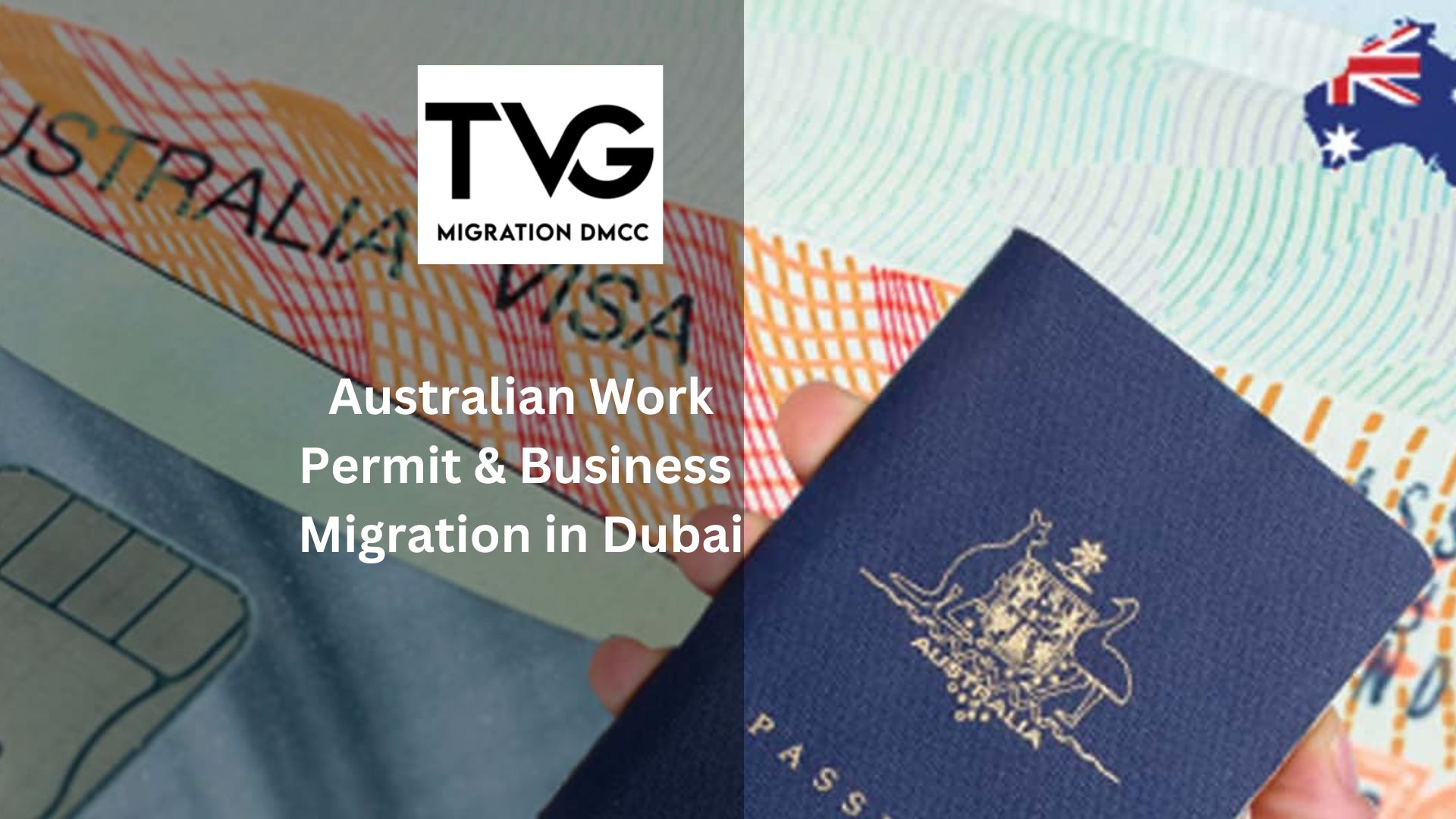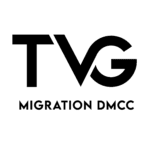Are you a resident of Dubai with dreams of exploring new horizons and advancing your career? If Australia has captured your imagination as a destination to pursue your work dreams, you’re not alone! With its robust economy, diverse job opportunities, and high standard of living, Australia has become a sought-after destination for skilled workers from around the world, including expats residing in Dubai. In this blog, we will provide you with valuable information and insights on how to migrate from Dubai to Australia as a skilled worker, making your work aspirations a reality. Australia’s Skilled Migration Programs: Australia offers various skilled migration programs designed to attract talented individuals who can contribute to the country’s economy. The most prominent program is the General Skilled Migration (GSM) program, which includes visas such as the Skilled Independent Visa (subclass 189), Skilled Nominated Visa (subclass 190), and Skilled Work Regional (Provisional) Visa (subclass 491). These visas are points-based and require applicants to meet specific eligibility criteria related to age, English proficiency, work experience, qualifications, and occupation. Occupations in Demand: Australia places emphasis on attracting skilled workers in occupations that are in high demand. The country maintains a list known as the Medium and Long-Term Strategic Skills List (MLTSSL) and the Short-Term Skilled Occupation List (STSOL), which outline occupations with shortages in the labour market. Before considering migration, it’s essential to assess whether your occupation is on these lists and meets the relevant skills and qualification requirements. Skills Assessment: To migrate as a skilled worker to Australia, you must undergo a skills assessment by a relevant assessing authority. This assessment verifies that your qualifications and work experience align with Australian standards. Each occupation has a designated assessing authority, and the requirements may vary. It’s crucial to gather the necessary documentation, such as educational certificates, employment references, and English language test results, to support your skills assessment. English Language Proficiency: Proficiency in the English language is a crucial requirement for skilled migration to Australia. Applicants are generally required to undertake an English language test, such as the International English Language Testing System (IELTS) or the Occupational English Test (OET). Achieving the required minimum score demonstrates your ability to communicate effectively in English, a vital skill for success in the Australian workplace. Points-Based System: Australia’s skilled migration programs operate on a points-based system. Points are awarded based on various factors, including age, English language proficiency, work experience, educational qualifications, and other relevant criteria. The higher your points, the greater your chances of receiving an invitation to apply for a skilled visa. Understanding the points system and maximising your points can significantly enhance your prospects of successful migration. State Nomination: Many Australian states and territories offer additional pathways for skilled migration through state nomination programs. These programs allow states and territories to nominate skilled workers who meet their specific requirements. State nomination provides certain advantages, such as additional points and priority processing. Research the state nomination opportunities available in Australia to increase your chances of migration success. Seek Professional Guidance: Navigating the complex process of skilled migration to Australia can be overwhelming. Engaging the services of a reputable immigration consultancy, such as [Your Consultancy Name], can provide you with expert guidance and support. Our experienced team can assist you in understanding the migration requirements, preparing your application, and ensuring a smooth and efficient process from Dubai to Australia. If you’re ready to take the leap and pursue your work dreams in Australia, the skilled migration pathway provides an excellent opportunity. With its strong economy, diverse career options, and high living standards, Australia awaits skilled workers from Dubai who aspire to elevate their careers and embrace new opportunities. By familiarising yourself with Australia’s skilled migration programs, occupation lists, skills assessment requirements, and English language proficiency criteria, you can lay a solid foundation for a successful migration journey. Remember to seek professional assistance from [Your Consultancy Name] to ensure a seamless and stress-free migration process. Start planning your journey today and turn your dreams into reality Down Under!
Home – Best Canada & Australia Immigration Consultant in Dubai
News & Media
Student Guardian Visa in Australia: Accompany Your Child to Fulfil Their Educational Dreams
Australia, after the UK and US, has become one of the top choices for students from around the world who are seeking higher education abroad and exposure to international forums. However, the thought of sending your child away to a foreign country, which is often unfamiliar to many, might be unsettling. But, there is no need to worry. If you’re a parent or guardian contemplating sending your child to study in Australia, you might be surprised to learn that you can actually acquire a Student Guardian Visa to accompany them. This visa plays a vital role in ensuring the well-being, safety, and success of your child’s educational journey while giving you a peace of mind. Our objective is to provide valuable information and important guidelines in this blog to help students and their guardians obtain a Student Guardian Visa in Australia. Understanding the Student Guardian Visa The Student Guardian Visa is designed to allow parents or legal guardians to accompany and provide support for their children studying in Australia. The following will provide an overview of the visa’s purpose, eligibility criteria, and important considerations for guardians. The Importance of the Student Guardian Visa The Student Guardian Visa is designed for parents or legal guardians who want to accompany and support their children studying in Australia. With this visa, you can ensure your child’s safety, provide the necessary help, and be there for them throughout their degree tenure. Moreover, it gives you the opportunity to actively participate in their growth and success while they study in Australia. Eligibility Criteria and Requirements In order to be eligible, there are certain criteria and requirements that you need to meet. Relationship: You must have a genuine relationship with the student. This includes being their parent, legal guardian, or a relative who has been nominated as their guardian. Age: There is no specific age limit for the student guardian, but you must be old enough to fulfil your responsibilities as their guardian. Financial Capacity: You need to demonstrate that you have enough funds to support yourself and the student during their stay in Australia. This includes covering accommodation, living expenses, education costs, and any other necessary expenses. Health and Character: You must meet certain health and character requirements. This may involve undergoing medical examinations and providing police clearance certificates. Genuine Intention: It is important to show that you have a genuine intention to support and care for the student during their studies in Australia. This includes being actively involved in their welfare and education. Navigating the Visa Application Process Obtaining the Student Guardian Visa involves a comprehensive application process. Our consultancy firm guides you through each step – from gathering the necessary documentation to submitting the application and paying the required fees. We’ll also address common challenges that applicants may face and provide tips to ensure a smooth and successful application. How Our Immigration Consultancy Can Assist You We have extensive experience in assisting individuals and families with their visa applications.We will highlight the ways in which our firm can provide invaluable support throughout the Student Guardian Visa application process. That includes offering personalised guidance and advice to help with document preparation and submission because our goal is a stress-free and efficient experience for you and your child. Additional Resources and Services Beyond the visa application process, we understand that there may be other aspects to consider when sending your child to study abroad. Therefore, we provide information on the various support services available to international students, such as accommodation, airport pickup services, and access to educational resources. We will also outline the ongoing support and guidance that our consultancy firm can offer throughout your child’s educational journey. The Student Guardian Visa is a vital component of empowering your child’s educational journey in Australia. By understanding the intricacies of the visa application process and seeking professional guidance from an immigration consultant, you can ensure a hassle-free experience for your child and yourself. We are committed to providing comprehensive assistance, personalised advice, and reliable support every step of the way. Get in touch to learn more about how we can help you navigate the Student Guardian Visa application process and embark on this exciting educational adventure with your child in Australia!
Canada Visit Visa from UAE: Who can Apply?
If you’re a UAE resident planning to visit Canada, you may need to apply for a Canada Visit Visa. The Visit Visa, also known as a Temporary Resident Visa (TRV), allows you to stay in Canada for up to six months for tourism, visit family or friends, or attend business meetings. In this blog, we’ll cover the requirements and processing time for a Canada Visit Visa from Dubai. Who can apply for a Canada Visit Visa from Dubai? Anyone who is a UAE resident can apply for a Canada Visit Visa from Dubai. However, you must meet certain criteria to be eligible for a TRV. Here are the basic requirements: Valid Passport: You must have a valid passport that will remain valid for at least six months beyond your planned departure date from Canada. Purpose of Visit: You must provide evidence that you plan to visit Canada for a temporary stay and that you intend to return to your home country after your visit. Financial Support: You must prove that you have enough money to support yourself during your stay in Canada, including accommodation, food, and transportation expenses. You can provide bank statements, salary slips, and other financial documents to demonstrate this. Health and Character: You must be in good health and have no criminal record. Letter of Invitation: If you’re visiting family or friends in Canada, you may need to provide a letter of invitation from your host. The letter should include information about the purpose of your visit, the dates of your stay, and the host’s contact details. Canada visit visa from Dubai requirements The first requirement is a valid passport that will remain valid for at least six months beyond your planned departure date from Canada. You also need to provide evidence that you plan to visit Canada for a temporary stay and that you intend to return to your home country after your visit. This is to show that you have no intention of overstaying your visa and becoming an illegal immigrant in Canada. You must prove that you have enough money to support yourself during your stay in Canada, including accommodation, food, and transportation expenses. You can provide bank statements, salary slips, and other financial documents to demonstrate this. It’s also essential that you are in good health and have no criminal record. If you have a medical condition, you may need to provide medical reports or undergo a medical examination. If you’re visiting family or friends in Canada, you may need to provide a letter of invitation from your host. The letter should include information about the purpose of your visit, the dates of your stay, and the host’s contact details. Overall, the requirements for a Canada Visit Visa from Dubai ensure that the applicant is a genuine visitor and not a potential threat to the security or economy of Canada. Meeting these requirements can increase your chances of getting a Canada Visit Visa and enjoying a memorable trip to Canada. Canada Visit Visa from Dubai Processing Time The processing time for a Canada Visit Visa from Dubai varies depending on the individual case. Generally, the processing time takes around 14 days for a standard application. However, during peak season, it may take longer. It’s important to apply well in advance of your planned travel dates to avoid any delays. You can apply for a Canada Visit Visa online or in person at the nearest Visa Application Centre (VAC) in Dubai. The online application process is more convenient and faster, as you can submit your application and supporting documents electronically. You can also track the status of your application online. In conclusion, if you’re a UAE resident planning to visit Canada, you may need to apply for a Canada Visit Visa. Make sure you meet the requirements and apply well in advance to avoid any delays. With a Canada Visit Visa, you can enjoy all the beautiful attractions and experiences Canada has to offer.
Immigrate to Canada from Dubai: What, Why & How for Canadian Immigration
Canada has long been a popular destination for individuals seeking to immigrate and build a better life. With its strong economy, high standard of living, diverse culture, and welcoming immigration policies, It offers numerous opportunities for individuals worldwide. Being an international hub, Dubai is home to many individuals who aspire to immigrate to Canada. In this blog post, we will explore the what, why, and how of immigrating to Canada from Dubai, focusing on its critical aspects. What is Immigration Canada? Immigration Canada refers to relocating to Canada and obtaining legal permission to live, work, study, or settle there. The Canadian government offers various immigration programs and pathways to facilitate the entry of skilled workers, entrepreneurs, students, and family members of Canadian citizens and permanent residents. Why Immigrate to Canada? Economic Opportunities Canada is known for its strong and stable economy, offering numerous job opportunities across various sectors. The country has a robust labour market with a high demand for skilled workers, allowing immigrants to secure well-paying jobs and build successful careers. 2. Quality of Life: Canada consistently ranks among the top countries regarding quality of life. It offers excellent healthcare, high- quality education, social security benefits, and a safe and clean environment. The country’s commitment to inclusivity and multiculturalism makes it a popular vacation spot for both people and families. seeking a welcoming and diverse society. 3. Education: Canada boasts world-class educational institutions, making it an ideal choice for international students. Studying in Canada provides access to quality education, post-graduation work opportunities, and a pathway to Canadian permanent residency. 4. Healthcare: Canada provides universal healthcare coverage to its residents, ensuring access to quality medical services and support. This feature particularly appeals to individuals from countries with limited or costly healthcare systems. 5. Safety and Security: Canada is recognized for its safe and peaceful environment. It consistently ranks high in global safety indexes, making it a desirable location for people searching for security and stability. How to Apply for Canadian Immigration Choose the Right Immigration Program: Canada offers multiple immigration programs to cater to the diverse needs of applicants. The most popular pathways include the Express Entry system, Provincial Nominee Programs (PNPs), Family Sponsorship, and the Start-up Visa Program for entrepreneurs. Each program has its eligibility criteria and requirements, so it is essential to research and identify the most suitable program for your situation. 2. Meet the Eligibility Criteria: Once you have chosen the immigration program, carefully review and ensure that you meet the eligibility criteria. These criteria may include age, education, work experience, language proficiency (English and French), and adaptability. 3. Prepare the Required Documents: Gather all the necessary documents for your chosen immigration program. These may include passports, educational certificates, language test results (e.g., IELTS or CELPIP), work experience letters, proof of funds, and other supporting documents. It is crucial to ensure that all documents are complete, accurate, and up to date. 4. Submit your Application: Submit your application through the appropriate immigration program or pathway. The process may involve creating an online profile, providing personal information, and uploading the required documents. Pay attention to deadlines and follow the instructions provided by the Canadian immigration authorities. 5. Wait for a Decision: After submitting your application, you will enter a waiting period during which the Canadian immigration authorities will review your application. The processing time varies depending on the program and the volume of applications received. Stay updated with the progress of your application and respond promptly to any requests for additional information or documents. 6. Medical Examination and Security Checks: As part of the immigration process, you may be required to undergo a medical examination to ensure you meet the health standards set by the Canadian government. Additionally, a security background check will be conducted to assess admissibility to Canada. 7. Obtain Permanent Residency: If your application is approved, you will receive a Confirmation of Permanent Residence (COPR). This document allows you to become a Canadian permanent resident. You may be required to travel to Canada within a specified timeframe to activate your permanent residency status. Immigration to Canada from Dubai opens up opportunities for individuals and families seeking a better future. Canada’s inclusive society, strong economy, and high standard of living make it an attractive destination for many. By understanding the various immigration programs, meeting eligibility criteria, and following the application process diligently, you can embark on a successful journey towards building a new life in Canada.
Why migrate to canada from dubai?
Are you considering a move from Dubai to Canada? With its welcoming immigration policies, high standard of living, and diverse population, it’s no surprise that Canada is a popular destination for those looking to migrate from Dubai. In this blog, we’ll explore why it is worth moving to canada from Dubai. Canada consistently ranks high in standard of living among the world’s top countries for quality of life. From affordable healthcare to excellent public education, Canada offers its residents a high standard of living. The country also has a strong economy, with a low unemployment rate and many opportunities for career growth. Welcoming immigration policies Canada is known for its welcoming immigration policies, making it a popular destination for those looking to migrate from Dubai. The country has various immigration programs, including the Express Entry is a programme that enables qualified individuals to apply for permanent residency. Additionally, Canada has programs that cater to entrepreneurs and investors looking to start a business or invest in the country. Cultural diversity Canada is known for its cultural diversity, with residents from around the world calling it home. The country has a reputation for being tolerant and accepting of different cultures and religions, making it a desirable location for people seeking to experience new cultures and meet new people. Natural Beauty Canada is known for its natural beauty, from the Rocky Mountains to its stunning coastline. The country offers numerous outdoor activities, including hiking, skiing, and camping. Canada is the perfect destination for you if you’re a nature lover. Access to quality education Canada has a world-renowned education system, offering residents access to quality education from primary school to university. The country has a variety of universities and colleges, including some of the world’s top-ranked institutions. In conclusion, migrate to Canada from Dubai is worth considering if you’re looking for a high standard of living, welcoming immigration policies, cultural diversity, natural beauty, and access to quality education. Canada offers a safe and welcoming environment for those looking to start a new life and build a brighter future.
Exploring the Array of Visit Visas in the UAE: A Guide
The United Arab Emirates (UAE) stands as a vibrant and captivating destination that attracts visitors from all around the world. Whether you’re planning a leisurely vacation, visiting family and friends, or exploring business opportunities, understanding the different types of visit visas available in the UAE is essential. This comprehensive guide aims to provide detailed insights into the various visit visa categories, their specific requirements, and the privileges they offer. By familiarising yourself with these visit visas, you can ensure a smooth and hassle-free entry into the UAE, allowing you to make the most of your visit. Tourist Visa: The Tourist Visa is a popular choice for individuals planning a short-term visit to the UAE for tourism or leisure purposes. Key aspects include: a. Duration and validity: Explore the different durations and validity periods available for Tourist Visas. b. Entry options: Learn about single-entry and multiple-entry Tourist Visas and their respective advantages. c. Extensions: Understand the possibility of extending your Tourist Visa while in the UAE. Visit Visa for Family and Relatives: This category allows individuals to visit their family members and relatives residing in the UAE. Topics covered include: a. Eligibility criteria: Understand the relationship requirements and necessary documentation for this visa category. b. Sponsorship: Learn about the sponsorship process and responsibilities for Visit Visas for family and relatives. c. Duration and extensions: Explore the duration of stay allowed and the possibility of extending the Visit Visa. Visit Visa for Business Purposes: The Visit Visa for Business Purposes enables individuals to visit the UAE for meetings, conferences, or conducting business activities. Key points include: a. Invitation letters: Understand the importance of invitation letters and their role in obtaining the Visit Visa for business purposes. b. Business activities: Explore the range of permissible business activities under this visa category. c. Duration and extensions: Learn about the duration of stay allowed and the possibility of extending the Visit Visa for business purposes. Medical Treatment Visa: The Medical Treatment Visa caters to individuals seeking specialised medical treatment in the UAE. Topics covered include: a. Medical documentation: Understand the importance of providing comprehensive medical documentation to support your visa application. b. Accredited medical facilities: Explore the requirements related to receiving treatment from accredited medical facilities in the UAE. c. Duration and extensions: Learn about the duration of stay allowed and the possibility of extending the Medical Treatment Visa. As a foreigner planning to visit the UAE, understanding the different types of visit visas available is crucial to ensure a smooth and enjoyable experience. By familiarising yourself with the specific requirements, privileges, and limitations of each visit visa category, you can make informed decisions and properly prepare for your visit to the UAE. Remember to consult with the relevant authorities or seek professional assistance to ensure a seamless visa application process.
Building Your Career Abroad: Understanding the Work Permit Categories in Canada
Work permits play a vital role for UAE residents aspiring to work in Canada, opening up a world of employment opportunities and professional growth. Canada’s robust economy, diverse industries, and welcoming immigration policies make it an attractive destination for skilled professionals seeking international work experience. In this comprehensive guide, we will delve into the different work permit categories available in Canada, providing valuable insights into their requirements, eligibility criteria, and benefits. Whether you are a seasoned professional, recent graduate, or ambitious entrepreneur, understanding the various work permit options will empower you to take advantage of Canada’s thriving job market and realise your career aspirations. Temporary Foreign Worker Program (TFWP): The Temporary Foreign Worker Program is designed for skilled workers who have received a job offer from a Canadian employer. Key aspects include: a. Labour Market Impact Assessment (LMIA): Understand the importance of LMIA and how it affects the eligibility for the TFWP. b. High-demand occupations: Explore the in-demand occupations in Canada and how they relate to work permit applications. c. Work permit duration: Learn about the duration of work permits under the TFWP and the possibility of extensions. International Mobility Program (IMP): The International Mobility Program encompasses various work permit categories that do not require an LMIA. This includes: a. Intra-Company Transfers: Explore opportunities for employees of multinational companies to transfer to a Canadian branch or affiliate. b. NAFTA/USMCA Professionals: Understand the work permit options available to citizens of the United States and Mexico under the North American Free Trade Agreement (NAFTA) or the United States-Mexico-Canada Agreement (USMCA). c. Global Talent Stream: Discover the fast-track option for certain high-demand occupations through the Global Talent Stream program. Post-Graduation Work Permit (PGWP): Students who have completed a program of study at a designated Canadian educational institution may be eligible for the Post-Graduation Work Permit. Key points include: a. Eligibility criteria: Understand the requirements, such as program duration and type of institution, to be eligible for the PGWP. b. Work permit duration: Learn about the duration of the PGWP, which allows graduates to gain Canadian work experience. c. Pathway to permanent residency: Explore how the PGWP can serve as a stepping stone towards permanent residency in Canada. Start-up Visa Program: Entrepreneurs with an innovative business idea and support from a designated organisation can apply for the Start-up Visa Program. Topics covered include: a. Eligibility requirements: Understand the criteria for qualifying under the Start-up Visa Program, including the support from designated organisations. b. Business plan and investment: Learn about the importance of a comprehensive business plan and the required investment for this program. c. Permanent residency pathway: Discover how the Start-up Visa Program offers a pathway to permanent residency in Canada. Provincial Nominee Programs (PNPs): Provincial Nominee Programs allow provinces and territories in Canada to nominate individuals with specific skills and experience. Key aspects include: a. PNP categories: Explore the different PNPs across Canada and their respective criteria and streams. b. Employment offers: Understand the role of employment offers in the PNP process and their impact on work permits. c. Provincial pathways to permanent residency: Learn how PNPs can lead to permanent residency opportunities in specific provinces. Canada offers a diverse range of work permit categories, catering to the needs and aspirations of UAE residents seeking employment, education, or entrepreneurial opportunities. By familiarising yourself with the different work permit programs, their requirements, and pathways to permanent residency, you can take the necessary steps to pursue your Canadian dream. However, the immigration process can be complex, and professional guidance
Work Permits in Canada: What You Need to Know About the New Policy in 2023
Canada has long been an attractive destination for individuals seeking employment opportunities and a high standard of living. The country welcomes skilled workers worldwide and offers various pathways to obtain a work permit. In 2023, Canada introduced a new work permit policy, streamlining the application process and aiming to reduce processing times. In this article, we will explore the critical aspects of the new policy, including how to get a work permit in Canada and how long it takes to acquire one. . Obtaining a Work Permit in Canada: 1. Determine your eligibility: Before applying for a work permit, it is crucial to determine if you meet the eligibility criteria. Generally, applicants must have a job offer from a Canadian employer, possess the necessary qualifications and skills, and meet health and security requirements. 2. Labor Market Impact Assessment (LMIA): In some cases, a Canadian employer may need to obtain an LMIA, demonstrating that hiring a foreign worker will not negatively affect the local labour market. However, certain job categories and specific situations are exempt from this requirement. 3. Temporary Foreign Worker Program (TFWP): If an LMIA is required, the employer must apply for it through the TFWP. The program ensures that Canadian citizens and permanent residents have access to available job opportunities before they are offered to foreign workers. 4. Work permit application: Once the employer has obtained a positive LMIA or if an LMIA exemption applies, the foreign worker can proceed with the work permit application. The application should be submitted to Immigration, Refugees and Citizenship Canada (IRCC) online or through a visa application centre. 5. Supporting documents: Along with the application form, applicants must provide supporting documents, such as a valid passport, proof of job offer, educational credentials, and language proficiency test results, if required. Work Permit Processing Time in Canada: The processing times for work permits in Canada can vary depending on various factors, including the type of work permit, the applicant’s country of residence, and the time of year. Generally, the following estimates can give you an idea of the processing times: 1. Global Skills Strategy: Under this program, work permit applications for highly skilled workers may be processed within two weeks or even faster in some instances. 2. LMIA-based work permits: The processing time for LMIA-based work permits can range from several weeks to several months, depending on the complexity of the case and the regional workload. 3. LMIA-exempt work permits: Work permit applications that fall under LMIA exemptions, such as those for international agreements, intra-company transferees, or individuals with open work permits for spouses, can have relatively shorter processing times. It’s crucial to remember that these projections are general guidelines, and individual circumstances may cause processing times to vary. Canada’s new work permit policy in 2023 aims to make it easier for skilled workers to enter the country while ensuring the protection of the domestic labour market. By understanding the eligibility requirements, obtaining the necessary documentation, and following the application process, individuals can increase their chances of securing a work permit in Canada. While processing times for work permits can vary, the new policy intends to streamline the process and provide efficient outcomes for applicants. As always, staying updated with the latest information from official sources, such as the IRCC website, is recommended for the most accurate and current details.
Top 7 Reasons Canadian Express Entry Applications are Denied
Canada’s Express Entry system is a popular route for skilled workers looking to obtain permanent residency (PR) in the country. This system uses a points-based system to evaluate and select candidates based on their skills, education, work experience, and other factors. While the process may seem straightforward, it’s important to note that many applications are denied each year for various reasons. In this blog, we’ll explore the top seven reasons why Canadian Express Entry applications are denied. Incomplete Application One of the most common reasons for Express Entry application denial is an incomplete application. This can include missing documents, incorrect information, or failure to provide required information. It’s important to carefully review the application requirements and provide all necessary information and documentation to avoid delays or denial. Language Proficiency Language proficiency is a critical factor in the Express Entry system. Applicants are required to demonstrate proficiency in English or French through a recognized language test. If an applicant fails to meet the language proficiency requirements, their application may be denied. Education Credential Assessment Another common reason for Express Entry application denial is a failure to provide an education credential assessment (ECA). This assessment is required to verify an applicant’s foreign education credentials and determine their Canadian equivalency. Without an ECA, an applicant’s education credentials may not be recognized, and their application may be denied. Ineligibility for Federal Skilled Worker Program The Federal Skilled Worker Program (FSWP) is a popular route for skilled workers to obtain PR through Express Entry. However, applicants must meet specific eligibility requirements, including a minimum of one year of skilled work experience and a certain level of education. If an applicant does not meet the eligibility requirements, their application may be denied. Ineligibility for Provincial Nominee Program Provincial Nominee Programs (PNPs) are another popular route for skilled workers to obtain PR through Express Entry. However, each province has its own eligibility requirements, and applicants must meet both the federal and provincial criteria to be selected. If an applicant does not meet the eligibility requirements for a specific PNP, their application may be denied. Criminal Record Applicants with a criminal record may be deemed inadmissible to Canada and denied entry. The Canadian government takes criminality seriously and may deny an application if an applicant has committed certain types of crimes, including those related to violence, theft, or drug trafficking. Medical Inadmissibility Medical inadmissibility is another reason why an Express Entry application may be denied. Applicants are required to undergo a medical exam to ensure they are not a danger to public health and to confirm they do not have any medical conditions that could pose a burden on the Canadian healthcare system. If an applicant is deemed medically inadmissible, their application may be denied. While the Express Entry system is a popular route for skilled workers to obtain PR in Canada, many applications are denied each year. It’s important to carefully review the application requirements and eligibility criteria to avoid common mistakes and ensure a successful application. If you’re considering applying for permanent residency in Canada through the Express Entry system, it’s important to ensure your application is complete, accurate, and meets all eligibility requirements. The top seven reasons for Express Entry application denial highlighted in this blog can be avoided by working with an experienced immigration consultant who can guide you through the process and ensure your application is strong.
How to easily get Australian Work Permit & Business Migration in Dubai: A Guide
If you’re an entrepreneur or skilled worker seeking to start a new business or work in Australia, you might be wondering about the process of obtaining an Australian Work Permit and Business Migration. Fortunately, the process isn’t as daunting as you might think. In this guide, we’ll discuss the rules and process of obtaining an Australian Work Permit and Business Migration in Dubai, and how to make the process easier with the help of an immigration consultancy firm. Understanding the Australian Work Permit Before we dive into the details of the process, let’s first clarify what an Australian Work Permit is. A Work Permit, also known as a Temporary Skill Shortage (TSS) visa, is a temporary visa that allows skilled workers to work in Australia for up to four years. This visa is issued based on the sponsorship of an Australian employer and is meant for workers who possess skills that are in high demand in Australia. The process of obtaining a Work Permit involves several steps, including obtaining sponsorship from an Australian employer, obtaining a skills assessment, and submitting a visa application. The process can be complicated and time-consuming, which is why many people seek the assistance of an immigration consultancy firm to guide them through the process. Understanding the Australian Business Migration If you’re an entrepreneur looking to start or invest in a new business in Australia, you might be eligible for the Australian Business Migration program. This program is designed to attract high-calibre business owners and investors to Australia, and it offers several different visa options, including the Business Innovation and Investment visa and the Entrepreneur visa. The Business Innovation and Investment visa is intended for business owners who are willing to invest a significant amount of money in Australia. This visa requires applicants to have a successful business career, a minimum of AUD $1.5 million in business and personal assets, and a willingness to invest at least AUD $800,000 in an Australian business. The Entrepreneur visa is designed for individuals who have a funding agreement from a third party for at least AUD $200,000 to undertake a complying entrepreneur activity in Australia. The entrepreneur activity must relate to an innovative idea that will lead to the commercialization of a product or service in Australia. The Process of Obtaining an Australian Work Permit and Business Migration The process of obtaining an Australian Work Permit and Business Migration can be complex, but with the help of an immigration consultancy firm, it can be made easier. The consultancy firm will guide you through the process step-by-step, ensuring that all necessary documents are prepared and submitted correctly. The first step in the process is to identify which type of visa is most appropriate for your situation. Once you’ve identified the visa you need, the consultancy firm will help you prepare the necessary documents, including your skills assessment, business plan, and financial documents. The next step is to submit your visa application to the Australian government. The consultancy firm will ensure that your application is complete and accurate, and will keep you informed throughout the processing period. Finally, once your visa has been granted, the consultancy firm can provide additional services to help you settle into Australia. These services might include assistance with finding accommodation, opening bank accounts, and registering for healthcare services. Obtaining an Australian Work Permit and Business Migration can be a complex process, but with the help of an immigration consultancy firm, it can be made easier. The consultancy firm will guide you through the process, ensuring that all necessary documents are prepared and submitted correctly, and will provide additional services to help you settle into Australia. With the right help, you can achieve your dreams of working or investing in Australia.
Recent News
Hidden Gems in the United States;
Exploring the landmarks in the United
Is Schengen visa worth it for
Categories
- Australia
- Australia immigration
- Australia Immigration Services
- Australia Perfect Place To Migrate
- Australia PR Consultant AbuDhabi
- Australia Skilled Immigration
- Australia visit visa
- Australia work permit from Dubai
- Australian immigration
- Basic Requirements For Getting A Canada Skilled Immigration Visa
- Best Immigration Consultants in Dubai
- Business
- Canada
- Canada Best Country To Settle
- Canada Express Entry Programe
- canada imigration
- Canada immigration consultants in Dubai
- Canada immigration from Dubai
- Canada PR
- Canada PR from Dubai
- Canada Student Visa
- canada working visa
- Canadian consultancy Services in Dubai
- Express Entry Program
- Express Entry Program in Canada
- How To Apply For Australia PR
- immigration consultancy dubai
- immigration rules in Canada
- Migrate to Canada from Dubai
- Schengen Visa
- student visa
- study in australia
- UAE TO CANADA IMMigration
- Uncategorized
- United States
- Visit Visa
- Work Permit
Tags
Call us anytime during business hours:
Mon-Sun: 10:00 AM to 7:00 PM
Email Us info@tvgmigration.com
IN PARTNERSHIP WITH

REGISTERED WITH IRCC & MARA

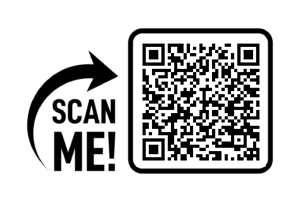
Opening Hours
Call us anytime during business hours:
Mon-Sun: 10:00 AM to 7:00 PM
Email Us
info@tvgmigration.com
In partnership with
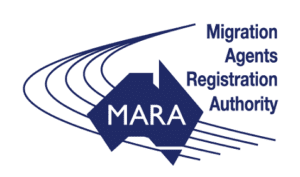

Registered with IRCC
![]()
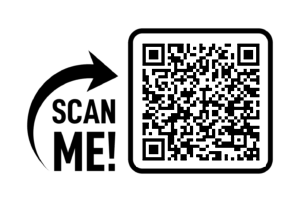
©2024. TVG Migration DMCC Copyright | All rights reserved by The Virmani Group



